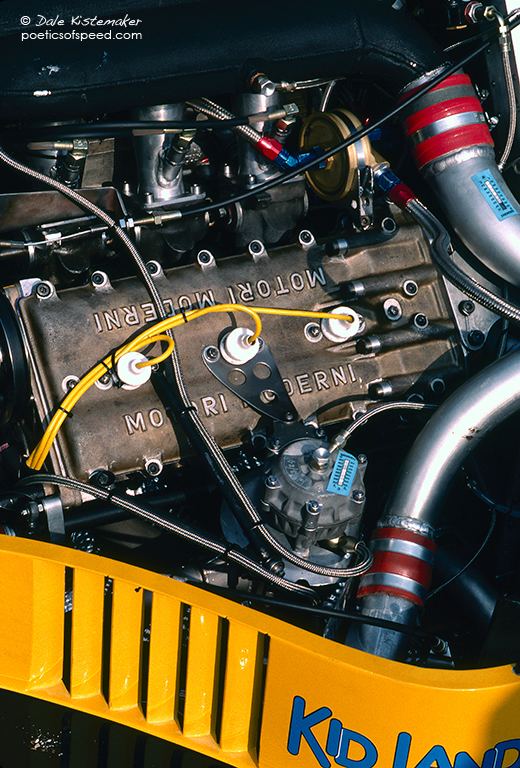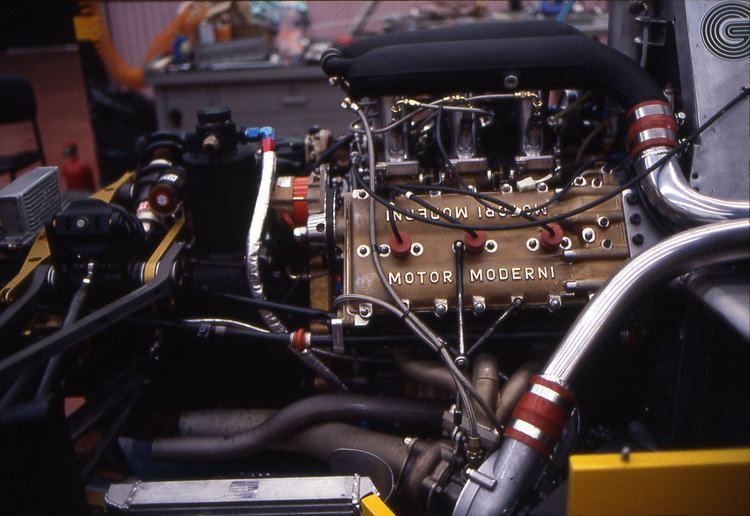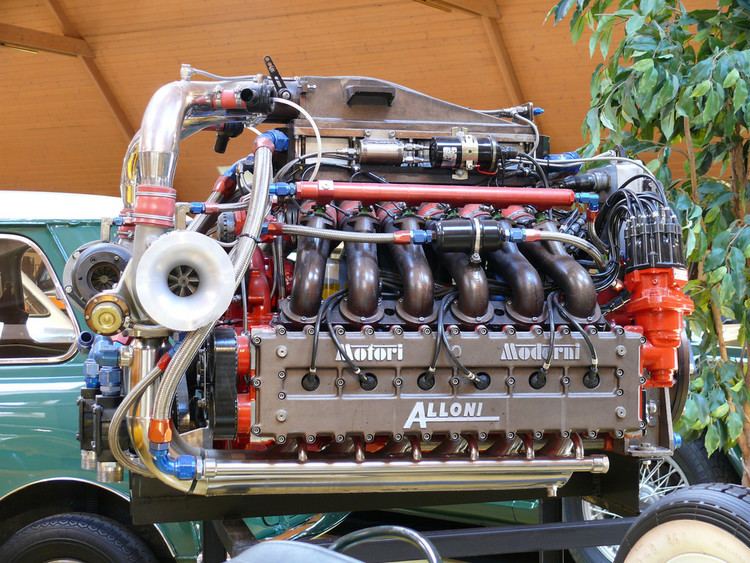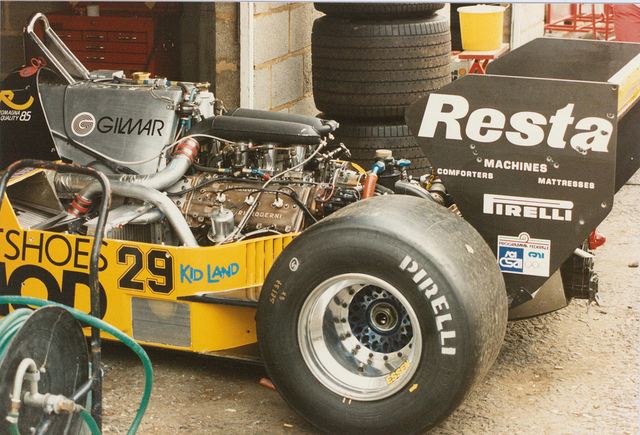 | ||
Prove minardi motori moderni 1989
Motori Moderni was a Formula One engine manufacturer from 1985 through 1987. It was established by the experienced Italian engine designer Carlo Chiti.
Contents
- Prove minardi motori moderni 1989
- Motori moderni mm419 ulm engine
- 1985
- 1986
- 1987
- Subaru
- Sportscar Racing
- Complete Formula One World Championship results
- References

Chiti, a former Alfa Romeo Formula One chief engineer, formed Motori Moderni to make turbocharged V6 engines for Minardi, known as the Tipo 615-90. The engines were used by Minardi in Formula One from 1985 to 1987 and by AGS in 1986.

Motori moderni mm419 ulm engine
1985

Their debut was at the 1985 San Marino Grand Prix where Pierluigi Martini impressed the F1 community using the new engine to put the grossly overweight (600 kg (1,300 lb)+ compared to other turbo cars at around 550 kg (1,210 lb)) M185 19th on the grid. From all reports of that first race meeting, the only problem with the Motori Moderni was a broken fuel pump belt in practice.

Martini failed to score a point in 1985 with a best finish of 8th and last in the season ending Australian Grand Prix and it was generally accepted that Martini was not yet up to F1 standard. Also, at the three fastest circuits on the calendar, the Motori Moderni powered Minardi was hopelessly outclassed. At Silverstone for the British Grand Prix, Martini was 8.054 seconds slower than Keke Rosberg's pole winning Williams-Honda (Rosberg had set the pole at an average of 160.9 mph (258.9 km/h), the fastest ever turbo lap speed). At the Österreichring in Austria he was 11.2 seconds slower than Alain Prost's McLaren TAG-Porsche, while at Monza in Italy he was 8.8 seconds slower than Ayrton Senna's Lotus-Renault.

In its debut season, the Motori Moderni engine was producing approximately 720 bhp (537 kW; 730 PS). This compared to the approximately 1,000 bhp (746 kW; 1,014 PS) of the Renault, Honda and BMW turbo engines, and the 900 bhp (671 kW; 912 PS) of the TAG-Porsche and Ferrari engines.
1986
Martini was replaced in 1986 as the team expanded to running two cars for the fast but crash prone Italian Andrea de Cesaris, and F1 rookie Alessandro Nannini, who showed his class by more often than not out pacing his more experienced countryman and generally was only let down by the underpowered engine and the quality of the M186. This was much to the annoyance of de Cesaris who often demanded to drive Nannini's car feeling it was better than his own and that as the teams lead driver he should get their best car. Again no points were scored with the Motori Moderni engines which were rated at approximately 780 bhp (582 kW; 791 PS). This compared unfavourably to the leading Honda, BMW, Ferrari, Renault and TAG-Porsche engines which were producing well over 950 bhp (708 kW; 963 PS) in race trim (the BMW was said to be the most powerful qualifying engine at around 1,400 bhp (1,044 kW; 1,419 PS)).
AGS only participated in two races during the 1986 season, with Ivan Capelli retiring from both the Italian and Portuguese Grands Prix.
1987
1987 would be the last season the Motori Moderni engine would be used in Formula One. Minardi, who had retained Nannini after an impressive debut season, replaced de Cesaris (who had moved to Brabham) with Spanish driver Adrián Campos who brought considerably more money to the team than driving talent. Once more no points were scored throughout the season, despite some spirited drives by Nannini which only resulted in 11th-placed finishes in Hungary and Portugal. The engines, now rated at 800 bhp (597 kW; 811 PS) after the introduction of the FIA's mandatory pop-off valve aimed at limiting the turbos power to 4.0 bar, were often struggling against the 575 bhp (429 kW; 583 PS) V8 Cosworth DFZ powered cars.
At the 1987 Australian Grand Prix in Adelaide, the Motori Moderni had its last ever Formula One race. Nannini qualified an impressive 13th on the grid only 3.434 behind Gerhard Berger's pole winning Ferrari Unfortunately his race only lasted a few hundred metres as he was pushed into the fence just out of the chicane after the start. Campos qualified 26th and last (3.42 seconds slower than Nannini), with his race ending with transmission failure after 46 of the scheduled 82 laps.
With 1988 being the final year for the turbos in Formula One (until 2014), Motori Moderni pulled out of the sport at the end of 1987 rather than try to adapt the engine for an even lower pop-off valve limit of 2.5 bar and a lower fuel limit of just 150 litres. As a result Minardi were forced to use the Cosworth DFZ engine in 1988.
Subaru
In late 1988 Chiti was commissioned by Subaru to design a new 12-cylinder boxer engine, known as the 1235 for the new 3.5-litre normally aspirated F1 regulations. This was tested by Minardi. The Japanese car company then bought the Coloni team. The program was a complete disaster. In June 1990 Subaru withdrew and sold the team back to Enzo Coloni.
Sportscar Racing
After abandoning Formula One, the engines found use in the Alba Racing Team's AR20 entry in the 1990 World Sportscar Championship, but were once again unsuccessful.
The engine later saw use in offshore powerboat racing.
Complete Formula One World Championship results
(key) (results in bold indicate pole position; results in italics indicate fastest lap)
† — Cars did not finish the Grand Prix, but were classified as they completed over 90% of the race distance.
